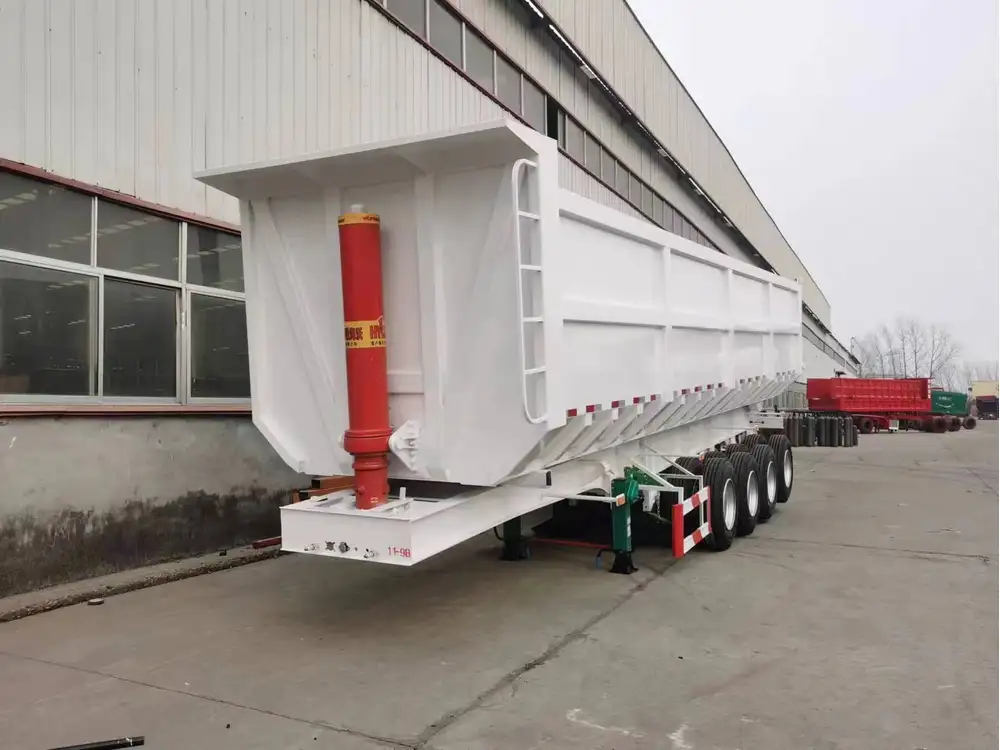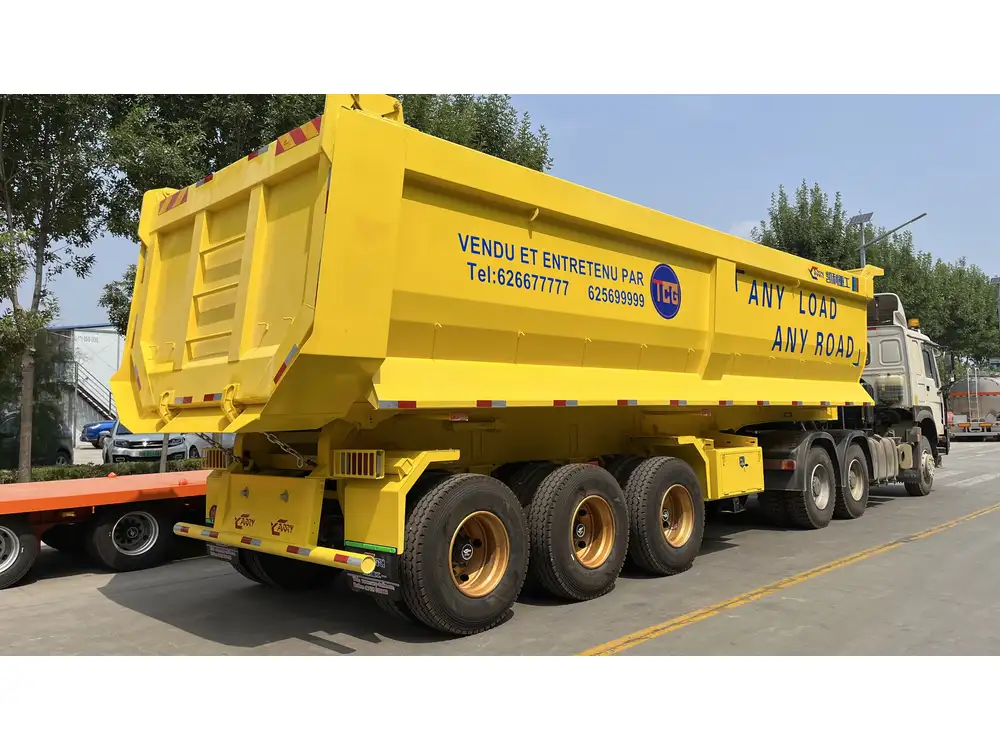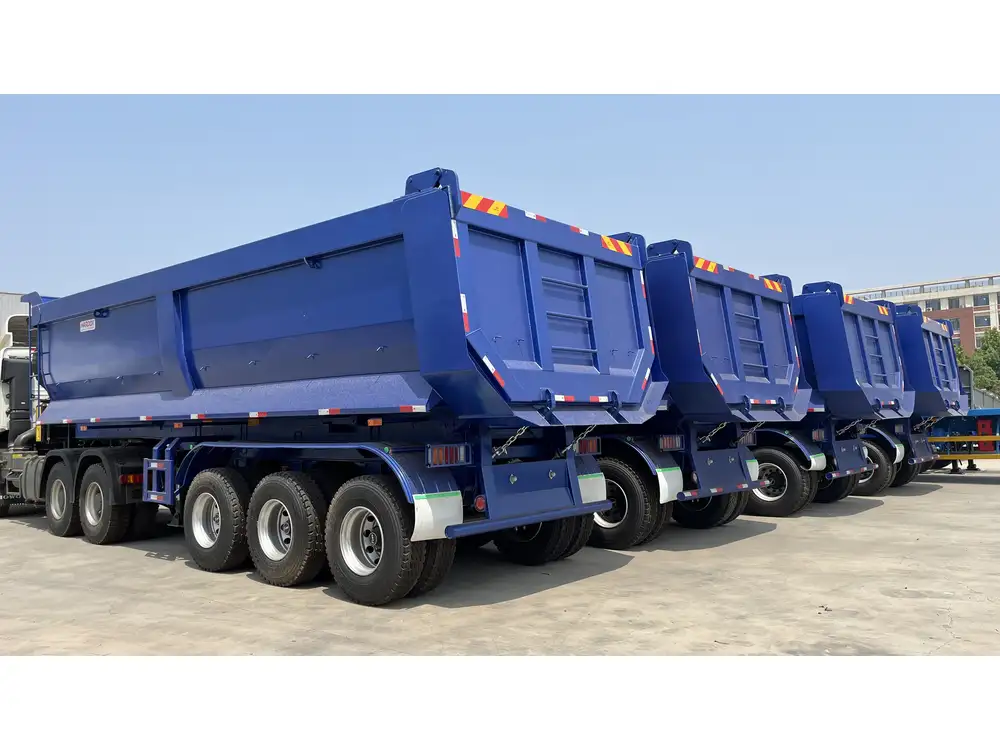In the expansive world of transportation, semi trucks play a pivotal role, particularly in freight and cargo movement. A fundamental component of this system is the semi truck trailer, often referred to by various names that can sometimes create confusion. This comprehensive guide unpacks the terminology surrounding semi truck trailers, outlines the different types available, and explores their applications, ensuring you gain a profound understanding of this essential vehicle segment.
What is a Semi Truck Trailer Called?
The terminology surrounding a semi truck trailer can vary based on regional vernacular and industry standards. Traditionally, a semi truck trailer is known as:
- Semi Trailer: This term refers specifically to trailers that are designed to be towed by a semi truck, which has wheels at the back and connects to the tractor unit through a fifth wheel hitch.
- Freight Trailer: In many contexts, especially within logistics, a semi trailer is often referred to as a freight trailer, highlighting its primary function of transporting goods.
- Cargo Trailer: This term emphasizes the trailer’s role in carrying cargo, regardless of its specific type or design.
- Intermodal Trailer: When the trailer is designed for multiple forms of transport—including rail and sea—it is often classified as an intermodal trailer.
- Haul Trailer: A more generic term that can apply to any trailer used to haul goods.
Understanding these terminologies is crucial for anyone in the transportation industry, especially manufacturers, operators, and logistics professionals.
The Structure of Semi Truck Trailers

Key Components of a Semi Truck Trailer
To fully appreciate the functionality of semi truck trailers, one must comprehend their key components. Here is a breakdown:
| Component | Description |
|---|---|
| Chassis | The frame of the trailer, providing the structure and support. Typically made from high-strength steel. |
| Deck | The loading area where cargo is placed; can vary in design based on cargo type. |
| Axles | The shafts that hold the wheels; crucial for bearing loads. Most semi trailers have at least one axle and can have multiple axles for heavier loads. |
| Suspension | Systems designed to absorb shocks from the road and distribute weight evenly across axles. |
| Braking System | Essential for safety; semi trailers typically have air brakes to enhance stopping power. |
| Coupling Mechanism | The fifth wheel connection allows the trailer to be attached to the tractor unit securely. |
Load Capacity and Design
The overall load capacity of a semi truck trailer is determined by various factors, including chassis material, axle configurations, and manufacturer specifications. A common distinction is between standard trailers, which usually accommodate loads up to 40,000 pounds, and specialized trailers designed for heavier or oversized loads that can support weight exceeding 80,000 pounds under certain regulations.
Types of Semi Truck Trailers
Semi trailers come in a plethora of designs and configurations, each intended for specific transportation needs. Below are the most common types:

1. Flatbed Trailers
Characteristics:
- Open deck without sides or a roof, allowing for easy loading and unloading from all angles.
- Ideal for transporting lumber, building materials, heavy equipment, and large containers.
Usage Example:
- A construction company may use a flatbed trailer to transport steel beams to a job site, as it facilitates crane loading.
2. Dry Van Trailers
Characteristics:
- Enclosed trailers that protect cargo from weather elements.
- Commonly used for general freight and common shipments.
Usage Example:
- A logistics company utilizes dry van trailers to transport retail goods across the country, ensuring they remain dry and secure.
3. Reefer Trailers
Characteristics:
- Equipped with refrigeration units to maintain temperature control, suitable for perishable goods.
- Commonly used in the food and pharmaceutical industries.
Usage Example:
- A food distributor uses reefer trailers to transport frozen products, ensuring they arrive without spoilage.

4. Tanker Trailers
Characteristics:
- Specifically designed for transporting liquids, such as chemicals, fuel, and food-grade substances.
- Features specialized construction to prevent leakage or contamination.
Usage Example:
- An oil company employs tanker trailers to transport crude oil from extraction sites to refineries.
5. Lowboy Trailers
Characteristics:
- Has a well or depressions to lower the load height, allowing for taller cargo to be transported.
- Primarily used for heavy construction machinery.
Usage Example:
- A construction firm relies on lowboy trailers to move excavators and bulldozers, complying with height restrictions on roadways.
6. Step Deck Trailers
Characteristics:
- Similar to flatbeds but with a lower deck, allowing for the transport of taller items not clearable by standard flatbeds.
- Provides versatility in transporting a range of construction or machinery equipment.
Usage Example:
- A logistics company transports oversized factory components using step deck trailers, circumventing height restrictions on interstates.

7. Enclosed Cargo Trailers
Characteristics:
- Typically smaller and towing behind pickup trucks or vans, ideal for smaller freight and personal items.
- Provides security and protection from elements.
Usage Example:
- Used by moving companies to transport household items, ensuring protection during transit.
8. Car Hauler Trailers
Characteristics:
- Specifically designed for transporting vehicles.
- Can be open or enclosed, accommodating different types of cars and motorcycles.
Usage Example:
- A dealership utilizes car hauler trailers to move multiple new cars to their showroom.
Key Considerations for Selecting a Semi Truck Trailer
When determining which type of semi truck trailer to use, several factors warrant consideration:

1. Cargo Type
The nature of the cargo dictates the appropriate trailer type. Perishable goods necessitate refrigerated trailers, whereas construction materials may require flatbeds.
2. Load Capacity
Always assess the load capacity of both the trailer and the tractor unit. Each state has regulations governing how much weight can be legally transported.
3. Road and Weather Conditions
The operational environment affects trailer selection. For instance, off-road demands may necessitate sturdy, specialized trailers.

4. Compliance with Regulations
Each trailer type must meet specific safety and legal requirements. Ensure that your choice aligns with regional transport laws, especially for oversize or hazardous cargo.
5. Delivery Needs
Consider the delivery schedule and urgency. Some trailers allow for faster loading and unloading times than others.
The Importance of Maintenance
For those involved in the transport and logistics industry, maintenance of semi truck trailers is paramount. Proper maintenance ensures not only the safety of the driver but also the timely delivery of goods. Critical areas to focus on include:

1. Regular Inspections
Performing regular inspections under DOT (Department of Transportation) guidelines helps identify any potential issues before they escalate.
2. Brake Systems
Given the heavy loads involved, brake systems should be routinely checked and serviced to ensure optimal performance.
3. Tires
Maintaining proper tire pressure and tread depth is essential for safety, fuel efficiency, and compliance with regulations.

4. Lighting Systems
Ensure all lights, including brake lights and turn signals, function correctly, as they are vital for safety during night or inclement weather driving.
5. Suspension Systems
Regularly inspect the suspension system to maintain comfortable handling and to prevent excess wear on the trailer.
Conclusion
Understanding the nuances of semi truck trailers and their classifications is essential for professionals in the transportation industry. By familiarizing ourselves with the terminology, structural components, and various types available, we can make informed decisions that enhance operational efficiency and comply with legal requirements. As the demand for freight transport continues to grow, having a comprehensive grasp of trailer types, their applications, and maintenance needs will undoubtedly facilitate smoother operations and foster business success in the transportation domain.
With this insightful guide, stakeholders in the logistics and transportation industry can confidently approach the complexities of semi truck trailers, ensuring they meet their operational needs efficiently and effectively.



